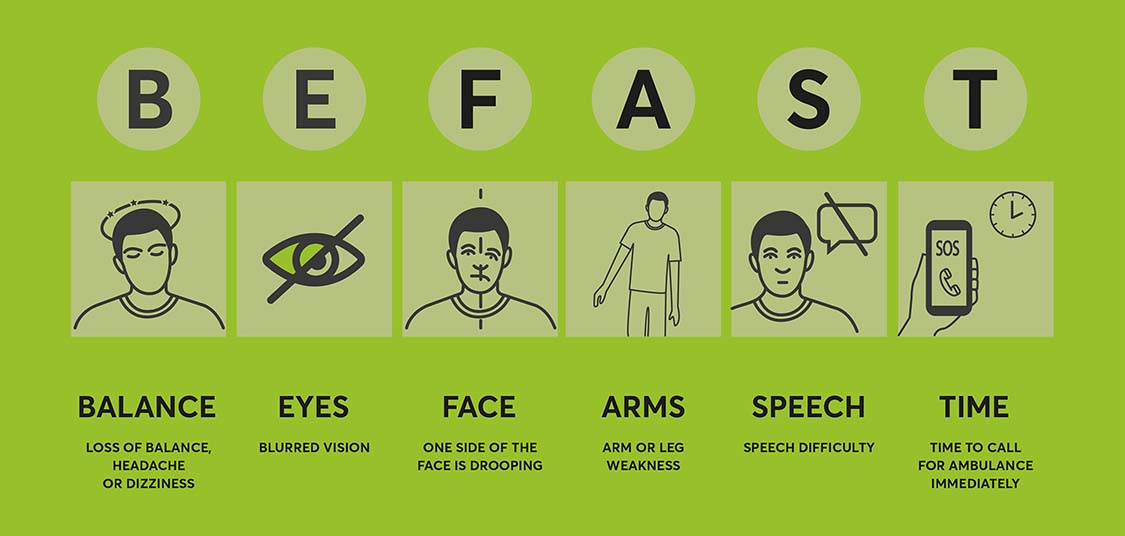What are the Signs of a Transient Ischemic Attack (TIA)?

There is absolutely no denying the seriousness of a stroke, a life-threatening medical condition that occurs when the blood supply to the brain is cut-off.
Those that are lucky enough to survive a stroke can suffer from a number of debilitating ailments for years on end, such as weakness and paralysis, problems with speaking or understanding and a loss of vision on one side of the body.
The signs of a stroke can vary. Sudden numbness in the face; confusion or trouble speaking; difficulty walking and a sever headache are synonymous with an on-coming stroke.
It therefore goes without saying that anyone experiencing such symptoms should seek urgent medical attention immediately.
What you may not be aware of are the different types of stroke that can occur. These are:
- Ischemic stroke
- Haemorrhagic stroke
- Transient ischemic attack
The seriousness of all three types of stroke can no be overstated, although for the purpose of this article we have focussed our attention on transient ischemic attacks.
Also known as a TIAs or a ‘mini stroke’, transient ischemic attacks are often the precursor to a more serious condition – being aware of the early warning signs can help prevent a stroke from occurring.
What is a Transient Ischemic Attack (TIA)?
A transient ischemic attack occurs when the blood supply to the brain is cut off. Unlike an ischemic stroke however, transient ischemic attacks are brief and do not cause permanent brain damage.
Whilst the signs of a TIA are initially similar to that of a stroke, they are only temporary, and you may feel fine after an hour or two.
In no way does this mean that your symptoms should be ignored – you may experience multiple TIAs in a short space of time, a warning sign that a more serious ischemic stroke may occur.
Being aware of the symptoms is the key to prevention.
What Causes a TIA? –
TIAs occur when a blood clot temporarily cuts off the supply of blood to the brain. Clots are typically a result of atherosclerosis, which describes the build-up of plaque (i.e. fat, cholesterol and calcium) in the arteries that supply blood to the brain and other parts of the body.
Signs of a TIA –
Those experiencing a TIA will typically experience one or more of the following symptoms:
- Weakness or paralysis, typically on one side of your body. This can occur in the face, arm or leg;
- Difficulty talking or understanding others;
- Loss of vision in one or both eyes;
- Dizziness;
- Loss of balance and/or coordination;
- Severe headache
What Do You Do if Someone You Know is Exhibiting the Signs of a TIA?
The BE FAST mnemonic is integral to spotting the signs of a TIA:

B – balance: assess if the person is having trouble with balance or co-ordination;
E – eyes: ask if the person is experiencing double or blurred vision or if they have lost sight in one or both eyes;
F – facial drooping: ask the person to smile. If a TIA is in progress, he or she will have difficulty smiling or one side of the face will droop;
A – arm weakness: the next thing to look out for is arm weakness. To test for this, ask the person you suspect is experiencing a TIA to raise his or her arms;
S – speech difficulties: you should also look out for slurred speech, so ask the person to speak;
T – time to call the emergency services: if all of these symptoms are present, contact the emergency services immediately by dialling 999.
Stroke Prevention – Limiting the Chances of Suffering a TIA
A Stroke of Luck’s ethos lies in providing stroke survivors with access to fitness professionals that specialise in exercise-based stroke recovery and rehabilitation. With that in mind there are a number of things you can do to maintain or improve your health and hopefully prevent a stroke from occurring.
This is especially important for individuals who have already suffered a transient ischemic attack, as the risk of suffering a potentially lethal ischemic stroke increases within the first 90 days.
- Watch your diet: Take steps to improve your diet and eat healthily. Try your best to limit your intake of cholesterol as-well as saturated and trans fats. Eating five pieces of fruit or vegetables a day will provide you with the important nutrients you need to help prevent a stroke;
- Quit smoking: cigarette smoking raises your blood pressure as-well as the risk of developing life-threatening blood clots. Should you need them, there are a number of cessation aids available, such as prescription tablets and nicotine replacement products;
- Get plenty of exercise: regular exercise will help maintain your overall health and well being and also limit the risk of developing other ailments that increase the risk of stroke;
- Limit your alcohol intake: if complete cessation is not an option, try your best to moderate your alcohol limit. Government guidelines recommend no more than 2 alcoholic beverages a day for men and only one drink daily for women.
If you have suffered a stroke and are interested in connecting with fitness professionals that specialise in exercise-based recovery, sign up to the A Stroke of Luck Member’s Club today!
